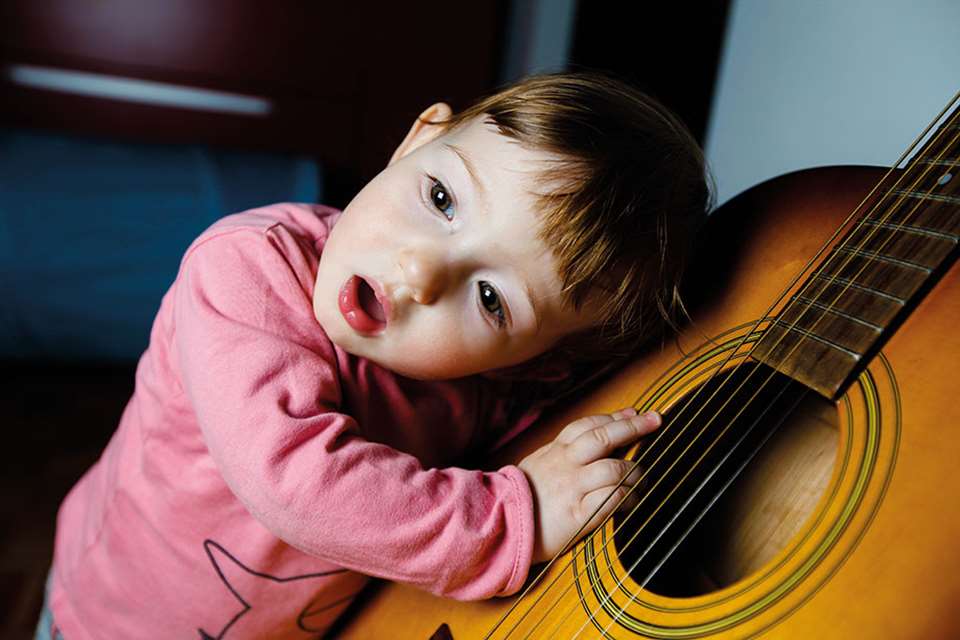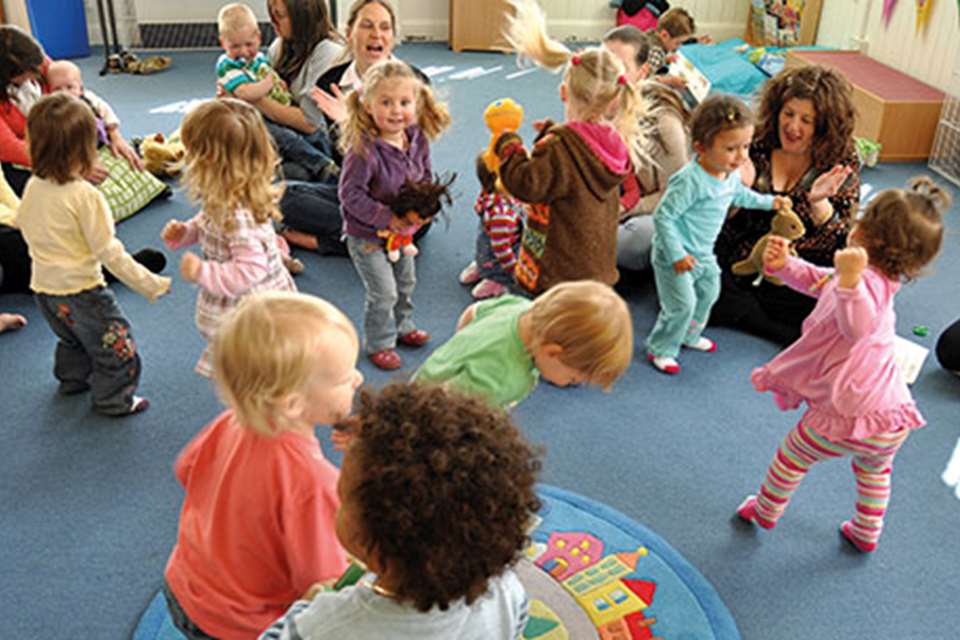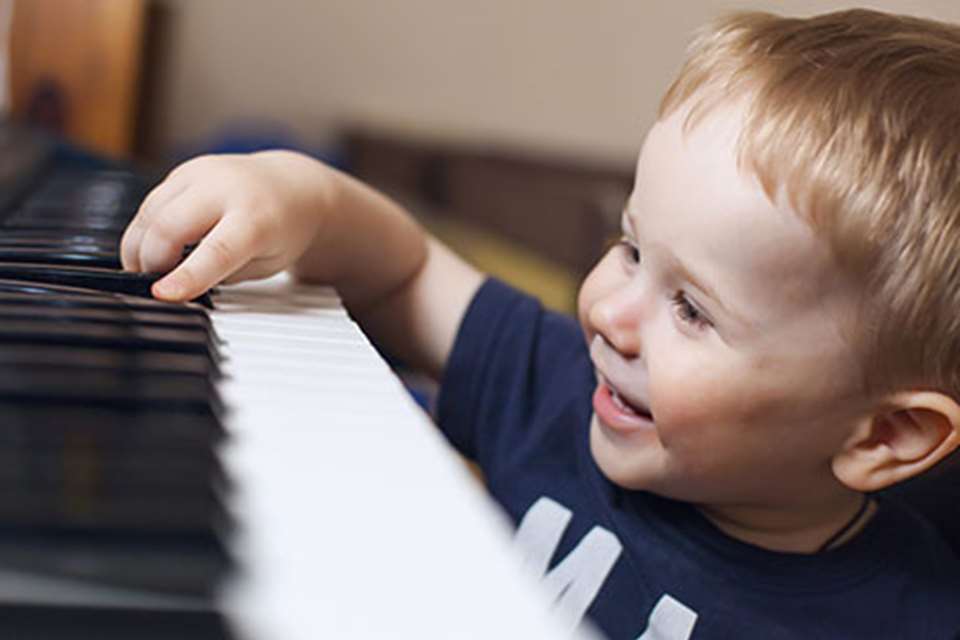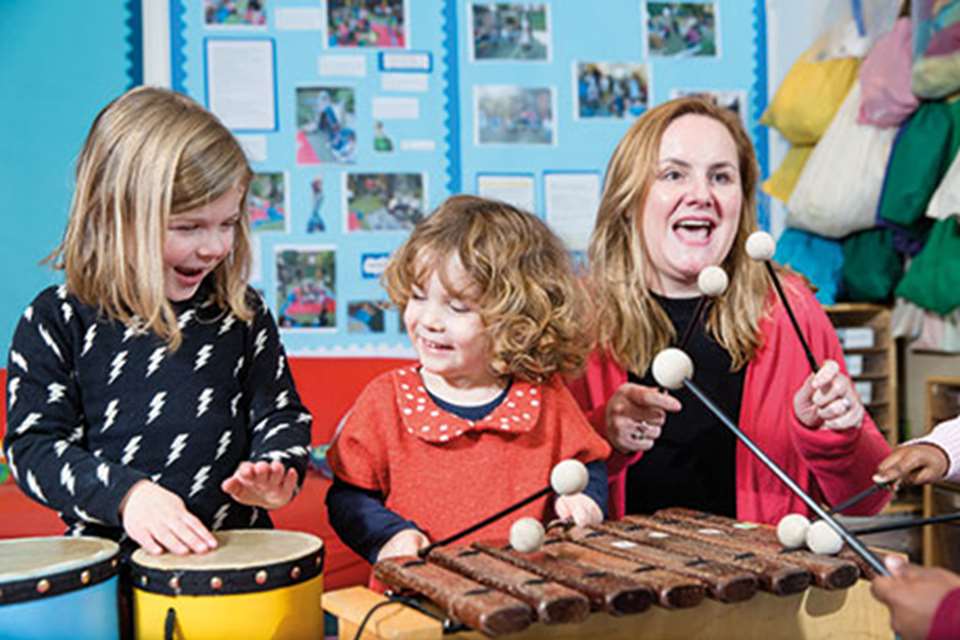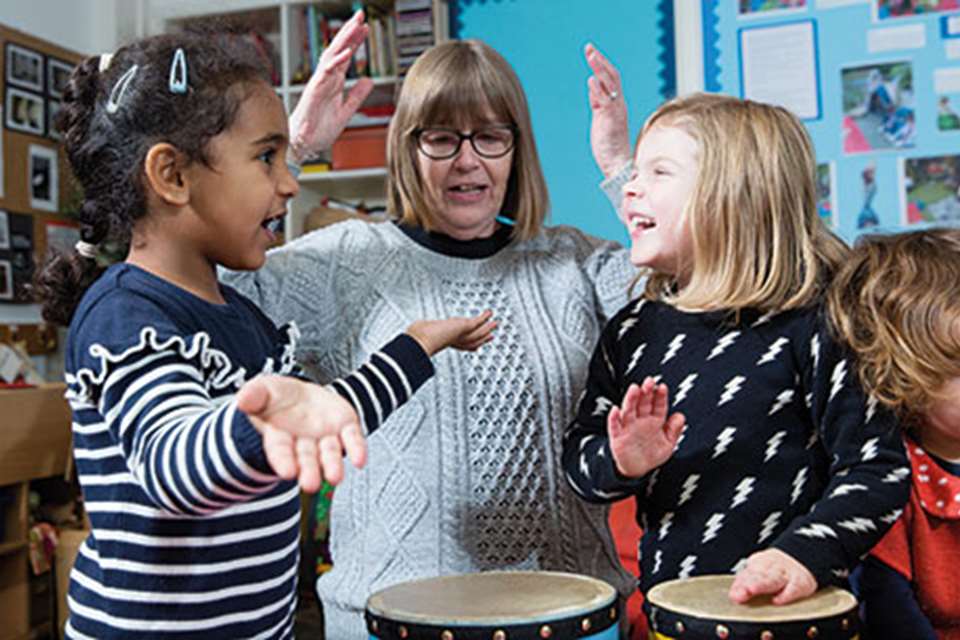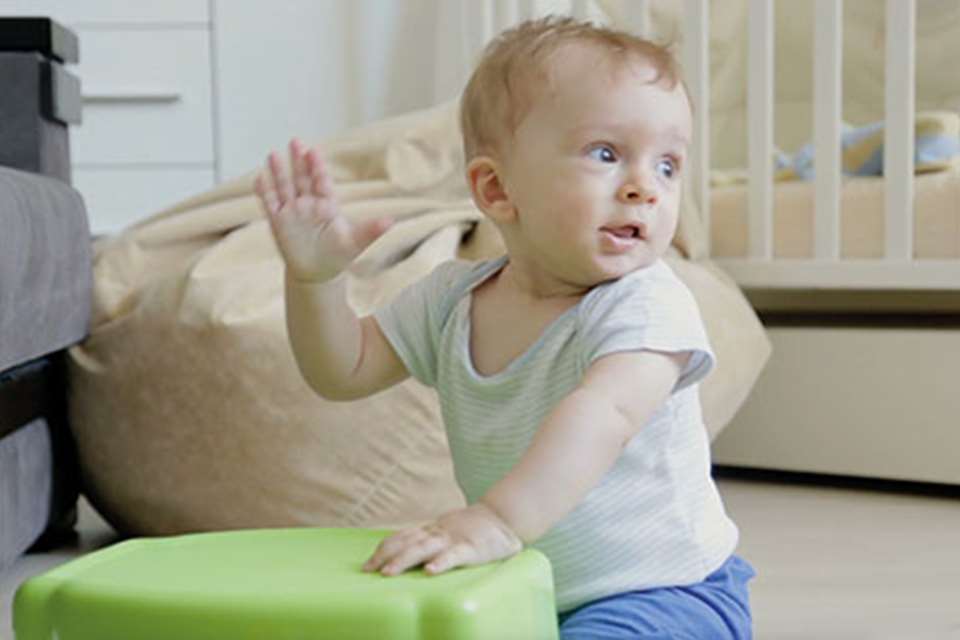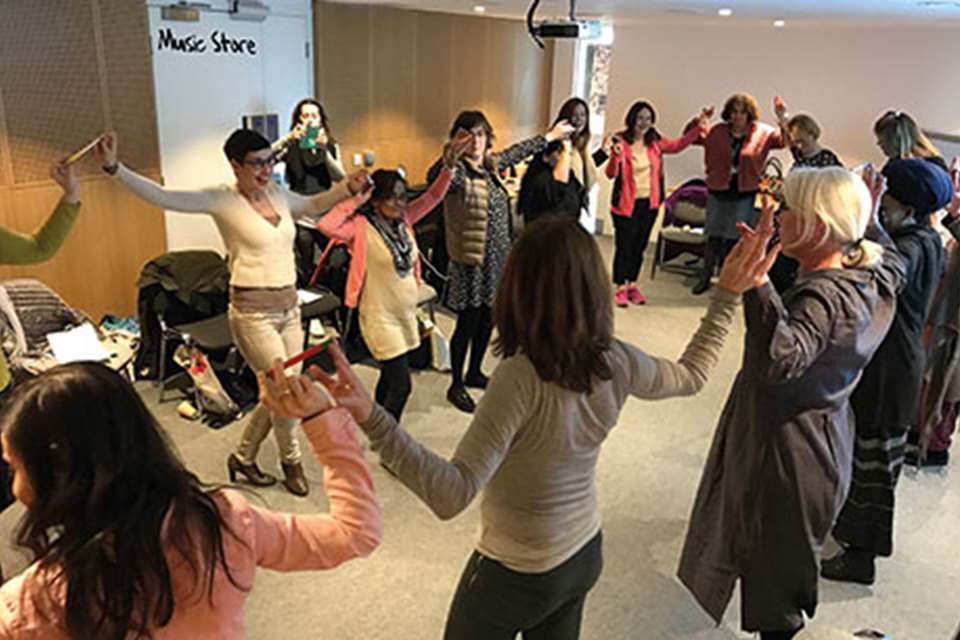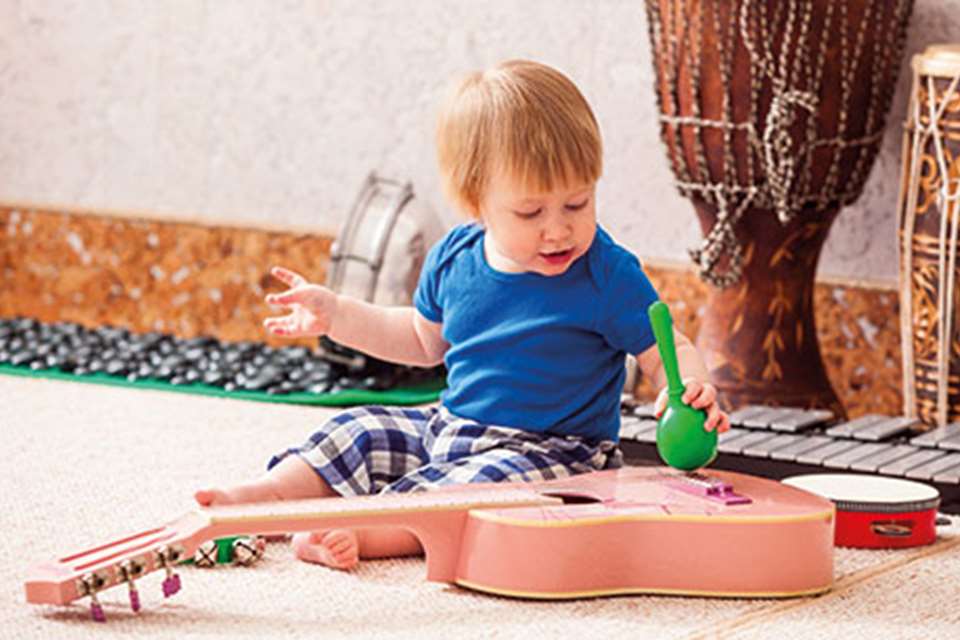Learning & Development Music: Part 8 - Express delivery
Linda Pound
Monday, April 16, 2018
In the final part of her series, Linda Pound explores the role of music in Expressive Arts and Design
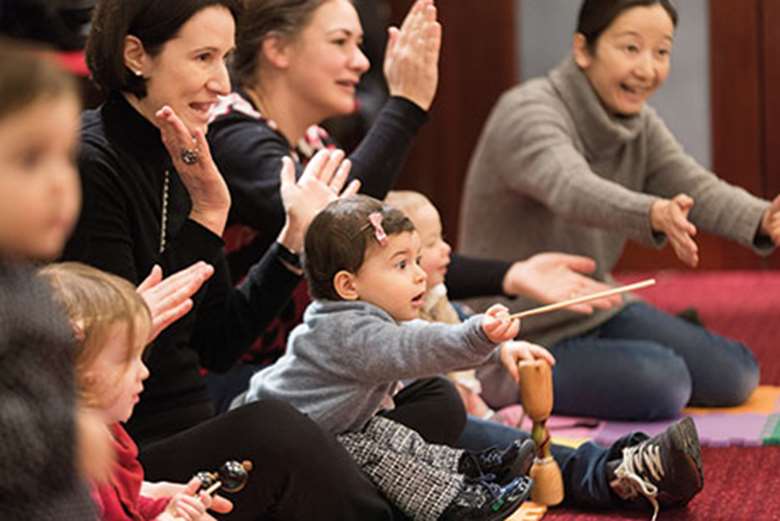
Download the PDF of this article
Photos courtesy of Wigmore Hall by Benajamin Eolovega and Benajmin Harte
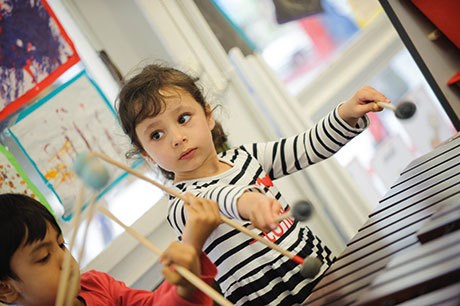
Expressive Arts and Design is the area of learning where music belongs in its own right. This series began by stressing the importance of music as a creative medium, and this should never be overlooked – despite the fact that, as we have seen throughout the series, music has a clear role to play in supporting all learning. Nor should we forget the importance of music-making as a creative action.
Too often, music is confined to singing songs in a particular way, copying given movements or playing a drum or triangle only when and in the way that an adult tells you to. Music and dance in their own right should be exuberant, expressive media, where children are allowed to explore and connect in unique, idiosyncratic and joyful ways in generous time and space.
Of course, creativity is not limited to the creative arts. Neuroscientist Vilayanur Ramachandran describes creativity as the quality that ‘brings us face to face with the very essence of what it is to be human’. Mathematicians and scientists, cooks and carpenters, surgeons and teachers the world over make use of our innate human creativity. However, the creative arts do have a particular role to play in that they provide ways of representing and expressing creative ideas and feelings.
Music and dance, like painting, drawing, modelling, storytelling and acting, must be given time and space for exploration, for imaginative responses and for making the unusual connections that are the hallmark of creativity.
Howard Gardner argues that ‘the mind of the five-year-old represents, in one sense, the height of creative powers’. Those of us whose role it is to support learning and development in the Foundation Stage have a responsibility to nurture creativity, creating a bedrock for all future learning.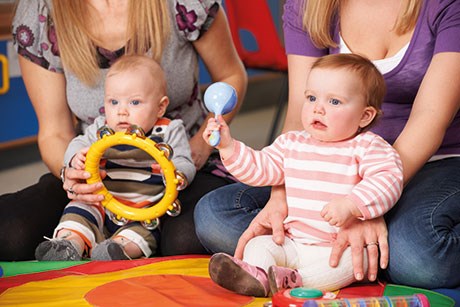
NURTURING CREATIVE EXPRESSION AND THINKING
Much has been written about the nature of creativity. It seems to have emerged as humans began to operate in groups, to use tools and to think in the abstract. It involves actions that are undertaken simply for the immediate pleasure or enjoyment, without any particular goal in mind. It also involves a willingness to take risks and look for new challenges.
In terms of young children’s music-making, this will mean ensuring that collaborative music and dance are encouraged, that they explore a wide range of sound-makers and that they are encouraged to explore the representational and symbolic qualities of music. We might ask ‘How does this sound make you feel?’ or ‘Can you make a happy (sad or angry) sound?’.
Children will need opportunities for sustained conversations with peers and adults in order to make new connections between their own experiences and those of other people. They will also need an environment that is sufficiently secure for them to feel able to take risks and make mistakes, and to be willing to take decisions and live with the outcomes. Above all, adults need to promote both musical playfulness and persistence in children.
Sound and movement
The voice is often described as the child’s first toy. In an Early Arts Network publication entitled Using Musical Lycra and Scarves, the authors cite the work of the organisation Jabadao and argue that ‘our body is our first home and movement is our first language’. Thus creative play and exploration begin with sound and movement – the very essence of musical activity.
Steven Mithen, professor of archaeology, suggests that the instinct to sing is as strong as the instinct to speak, and this is apparent from children’s earliest days. In previous articles in this series, the role of musical elements in communication and interaction from birth has been highlighted. Children love to sing, dance and use a variety of sound-makers with which to explore and experiment. As they did when they were babies exchanging sounds with adult care-givers, they enjoy playing about with sounds and movements.
Just as they did in infancy, children can share musical conversations with adults, using vocal sound or instruments rather than words to express ideas. This builds on and enhances children’s understanding of the process of communication.
Adults can further support exploration by providing children with a wide range of instruments, a variety of recorded music, and an empty space large enough to move around in with a small group of peers. When children draw or model, the results of their experimentation are visible, but with music and dance the results are not readily available for later critical reflection. A large mirror and sound-recording equipment can be used to help children monitor their musical explorations.
Being imaginative
From a very early age, children use their imagination in producing pictures, models, constructions, songs and dances. Yet there are significant differences in the way in which the outcomes are treated. Enter any early years setting and you will see children’s paintings and drawings pinned to the wall, often with captions offering a title or a quote from the artist or an explanation of the process involved. You may see a table or ledge dedicated to children’s 3D explorations, but you will rarely see or hear children’s invented songs made public in this way.
Two-, three- and four-year-old (and sometimes even younger) children regularly draw on their musical experiences, feelings and ideas to invent songs and instrumental or movement pieces, but we rarely hear performances or recordings of these. Why does musical creativity get lost in this way? By the time children reach statutory school age, such songs are rarely heard.
Valuing explorations
Some researchers argue that this creative musical activity ceases because children worry about making mistakes, or because they become more interested in fine detail and less concerned with the overall shape of the song. It may be because they are interested in faithful repetition. Were this true, it would impact on other forms of creative expression in the same way, but it doesn’t seem to. Children do not generally stop drawing at the age of five. They don’t seem to worry about error, or about precisely reproducing someone else’s picture.
It seems more likely that this happens because we pay children’s creative music-making less attention and appear to value it less, perhaps believing it’s not proper music. Given the right encouragement, children will continue to produce songs, improvised compositions and dances throughout childhood. Improvisations do not have to be the same each time. What’s important is children maintain motivation and enthusiasm for the creative process.
Making links
In supporting children’s imaginative music-making it is also important to encourage links between different creative media. Finding sounds to support storytelling, creating dances based on animal movements, making up songs about expeditions or other experiences – all of these are every bit as important as representing experiences through drawing, or role-play or block-building.
Adults have a vital role to play in this process in both modelling ideas and in giving the same level of encouragement to children’s musical explorations as would be given to a graphic representation. Could you illustrate the book used at storytime with sound effects? Can you make up a song to accompany children’s block-building? What do children need in order to make an instrument that will produce the sound effect they need?
What about asking a child, whose song or instrumental improvisation you have overheard, to perform it for a group of other children? Or you could video some of their musical explorations.
On Nicola Burke’s website (www.musicforearlyyears.co.uk) there is a short instrumental piece by a three-year-old which is impressive but not unique in its quality. There are many other three-, four- and five-year-olds who, given the opportunity and encouragement, can do something of a similar quality.
Media and materials
As with all creative and expressive processes, young children are no different in that they make use of all the experiences they have had. They draw on music they have heard, places they have been, performers they have seen and make connections – often unique connections. The adult’s job is to provide the environment in which children can explore and imagine in order to make informed and playful decisions about the materials, tools and techniques within a music-rich environment.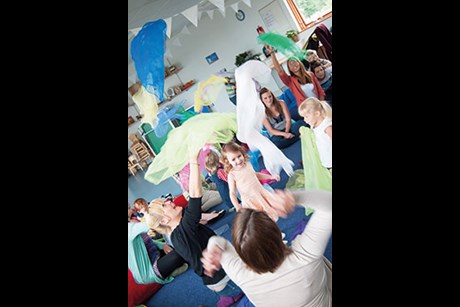
SO, YOU WANT TO KNOW MORE?
You, like all human beings, already possess musical knowledge and skills because you are engaged in making music every day of your life. But if this series has made you feel as though you want to know more, you could try:
Focus on having fun – the more you enjoy music, the more you’ll do; and the more you do, the better you’ll get at it!
Keep on drumming and dancing informally or simply decide to sing more – by yourself and with others.
Take small steps to improve your confidence, such as deciding to copy the rhythmic patterns that children make when exploring instruments or playing with the dough. You might decide to use some chime bars to signal things that go up and down in a story, or a bird whistle in stories about forests.
Make use of some online resources. Websites such as Sound Connections and Music House have video material that can give you fresh ideas.
Use what you know about young children’s learning and development to inform your decisions about music education. Visiting experts may have more musical experience and expertise but they will not have your understanding of the children. If you do have a music specialist coming into your setting, take the opportunity to learn from them – sit in and join in.
Become a student. A small charity, MERYC (Music Educator and Researchers of Young Children) has created a Level 4 Certificate of Music. Because it has been designed for practitioners working with young children, the course is known as the CME:EC. It represents a partnership between Trinity College, MERYC and the Centre for Research in Early Childhood (CREC), based in Birmingham. It’s a distance learning flexible programme. There are no assignments – course participants are assessed through evidence collected from practice. There is no start date – you can enrol at any time and work through the course at your own pace.
For full details see www.meryc.co.uk/cmeec.html 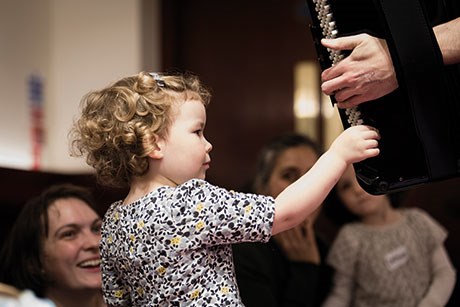
LIVE MUSIC: PERFORMERS AND PERFORMANCES
In addition to the modelling that practitioners do in their own settings and to performances seen and heard on digital media, live music performance can give children a strong stimulus for their own music-making. Professional musicians and dancers, inspiring children and broadening their horizons, can make a valuable contribution.
In addition to hearing live sound which involves vibration and physical sensation, children have the opportunity to see how sounds are made, observe the actions involved as musicians play or sing and watch the interactions that occur between performers and between performers and audience. There are other benefits.
There may be disadvantages to professional performances if the musicians are unaware of young children’s learning needs and the ways they generate musical ideas. It is also important that young children are not left with the feeling that only special people can achieve excellence. Music needs to be seen as integral to the whole curriculum and, like all other areas of learning, something in which everyone is engaged. Nor should performances leave children with a fixed view of what music is or can be.
Iit is vital that children see performers with a wide range of levels of expertise so they understand that music is something that everyone can do and enjoy, for example:
- groups of professional singers, musicians or dancers
- solo artistes
- family members on less-well-known instruments such as musical saws or tablas
- community members such as amateur singers, dance or recorder groups
- older children playing ukuleles.
 Wigmore Hall’s Partner Schools Programme is working with three Music Education Hubs and schools to co-create a programme of activities to embed music into the heart of the whole school, including early years. This includes creative music making with children alongside professional musicians. A range of different instruments are explored, including strings, winds and the ever-popular marimba.
Wigmore Hall’s Partner Schools Programme is working with three Music Education Hubs and schools to co-create a programme of activities to embed music into the heart of the whole school, including early years. This includes creative music making with children alongside professional musicians. A range of different instruments are explored, including strings, winds and the ever-popular marimba.
Wigmore Hall Learning can design bespoke early years music training (Stacey Campkin, scampkin@wigmore-hall.org.uk, 020 7258 8249).
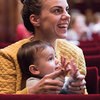 Events for under-fives at Wigmore Hall include informal concerts for babies and their parents/carers and music workshops for children aged one to five.
Events for under-fives at Wigmore Hall include informal concerts for babies and their parents/carers and music workshops for children aged one to five.
ABOUT THIS SERIES
This eight-part series explores how music:
- aids early learning and development
- can support learning across all areas of the EYFS
- promotes the Characteristics of Effective Learning.
The series will also identify ways adults who lack confidence in their own musical ability or competence can become more confident.
For the first seven articles, see www.nurseryworld.co.uk
MORE INFORMATION
Gardner H Five Minds for the Future. Harvard Business School Press
Harries J The Little Book of Sound Ideasand The Little Book of Rhythm and Raps. Featherstone Education
MacDonald S The Little Book of Junk Music. Featherstone Education
Mithen S The Singing Neanderthals. Weidenfeld and Nicolson
Pound L and Harrison CSupporting Musical Development in theEarlyYears. Open University Press
Ramachandran VS and Blakeslee SPhantoms in theBrain. Heinemann
www.earlyarts.co.uk has a range of publications, includingUsing Musical Lycra and Scarves to nurture young children’s learning andUsing a Playful Singing Voice to nurture young children’s learning
Nicola Burke, www.musicforearlyyears.co.uk/training
www.jabadao.org/jabadao-earlyyears
www.sound-connections.org.uk/what-we-do/early-years – includes some video materials


